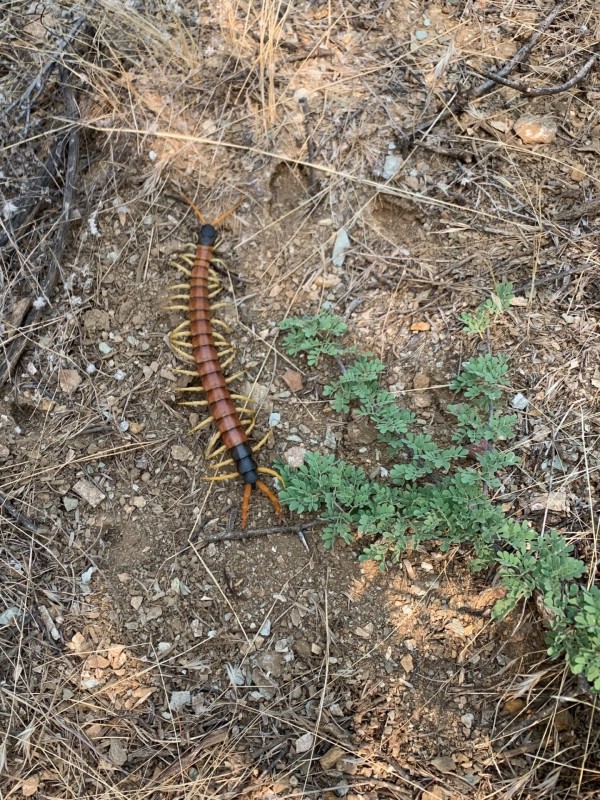-
Posts
175 -
Joined
-
Last visited
Content Type
Forums
Detector Prospector Home
Detector Database
Downloads
Everything posted by Skookum
-

The Unrealized Promise Of Multifrequency
Skookum replied to Steve Herschbach's topic in Metal Detector Advice & Comparisons
I keep thinking the next level of MF is going to come from increases in processing power that allow application of AI algorithms within the machine. What if a processor analyzes how a target responds to multiple frequencies or technologies at the same time and then it extrapolates that information to identify other targets at your location? No doubt this already happens in R&D labs, but could there be fresh gains having the process occur in real-time, on the ground? Perhaps, its another potentially cool application of artificial intelligence. -
Cool info. I'm no electrical engineer, but that sounds like it's going to vary the intensity of different frequencies in response to the ground signal. Does anyone know if other multi-frequency detectors do such?
-
I really like that mesh bottom.
-
Certainly, for all the reasons you mentioned. Then, sometimes, I think there is strong physiology at play for to certain brains. I think it works similar to the same pathways as seen in gambling. Random reward systems can have a powerful dopaminergic/norepinephrinergic effect on us. Add to it the human inclination to look for patterns everywhere (even when there may be none) and the fact that experience and knowledge increase your odds. There are some powerful biological forces at play. For fun only, here are the DSM 5 criteria with the word gambling replaced with “gold finding” and other similar minor word substitutions. Gold-finding Disorder A. Persistent and recurrent problematic gold seeking behavior leading to clinically significant impairment or distress, as indicated by the individual exhibiting four (or more) of the following in a 12 month period: a. Needs to find gold with increasing expenditure of money in order to achieve the desired excitement. b. Is restless or irritable when attempting to cut down or stop finding gold. c. Has made repeated unsuccessful efforts to control, cut back, or stop finding gold. d. Is often preoccupied with finding gold (e.g., having persistent thoughts of reliving past gold-finding experiences, handicapping or planning the next venture, thinking of ways to get money with which to find gold). e. Often seeks gold when feeling distressed (e.g., helpless, guilty, anxious, depressed). f. After losing money prospecting, often returns another day to get even (“chasing” one’s losses). g. Lies to conceal the extent of involvement with found gold. h. Has jeopardized or lost a significant relationship, job, or educational or career opportunity because of seeking gold. i. Relies on others to provide money to relieve desperate financial situations caused by seeking gold. B. The gold-finding behavior is not better explained by a manic episode. Specify if: Episodic: Meeting diagnostic criteria at more than one time point, with symptoms subsiding between periods of gold-finding disorder for at least several months. Persistent: Experiencing continuous symptoms, to meet diagnostic criteria for multiple years. Specify if: In early remission: After full criteria for gold-finding disorder were previously met, none of the criteria for gold-finding disorder have been met for at least 3 months but for less than 12 months. In sustained remission: After full criteria for gold-finding disorder were previously met, none of the criteria for gold-finding disorder have been met during a period of 12 months or longer. Specify current severity: Mild: 4–5 criteria met. Moderate: 6–7 criteria met. Severe: 8–9 criteria met.
-
Today, I kept the freshly charged battery off the detector until reaching the destination. After plugging it in and powering up, it read 2 bars on the power meter right off the bat. Tonight, after completing the charge cycle, I removed it and checked the voltage. It read 8.35 volts. That sure seems like a fair charge on a new 7.2 volt Li-ion battery. Perhaps there could be a software issue. The detector still works, just not reading as expected with the power meter.
-
Thanks for posting the feedback. I suppose it could be just fine and just an algorithm issue with displaying 2 bars at a higher voltage. I’d like to hear if anyone else that notices something similar since it could also represent a battery issue if the runtime is decreased.
-
I had something strange happen, today. I had my GPX 6000 battery fully charged and fresh off the charger. It had completed its charge cycle and then trickle charged overnight. I popped it in the detector and started detecting. Within five minutes the battery meter dropped from three bars to two bars. If I turned off the detector and let it sit for a 5-10 minutes and then turned it back on, it would go back up to three bars for a short period of time before then going back to two bars. Has anyone else noticed this with theirs?
-
I agree. The cost is a big deal for many people. Aside from cost, the physical characteristics are the main issue/point with the SDC. It's compact and waterproof. I've been curious if any long time users thought there were any remaining advantage of the SDC timings over the new GPX. The SDC used to have a reputation for nicely handling hot rocks. It seems pretty clear the GPX 6000 is more sensitive to small gold than the SDC. Does anyone with years of experience have an opinion on how these two compare with ironstones, soil mineralization, or salt signals?
-
I haven't seen very much conversation about the comparison between these two detectors now that the GPX 6000 is creeping into the SDC 2300's territory. So far, the GPX gets both smaller and deeper gold. Has anyone other observations?
-

GPX 6000 Rod Twisting - Owners Weigh In
Skookum replied to afreakofnature's topic in Detector Prospector Forum
I had wondered these same things for the movement at both shaft and the rubber cover for the jack. A pine rosin certainly would introduce a tackiness that could reduce the movement. However, I’m uncertain what effect it would have on the polymers since rosin is used as a plasticizer, as well. Anyone brave enough to be the test subject? 😅 -
Very true. I’ve had them startle me a few times. I’ll add it. It seems that responses to a poll can’t be edited once submitted. At some point, after we have the major ideas, we can re-poll. There a few more I need to check off now, but can’t until then.
-
You're right. My best estimate was 7-8 inches on that centipede. https://youtu.be/-6vzjjIrRK8
-
Excellent point. I added it now.
-
That looks a lot like this guy who surprised me, too. True they are poisonous, so I’m adding giant centipede to the list so you can edit your response if you want.
-
Somehow, I’ve managed to live most of my life in AZ and never have been stung by a scorpion. I’ll be happy to keep it that way. One night while prospecting, not detecting, we woke to the strangest sound of an animal calling just feet away outside of our tent. It kept calling until another arrived up and it’s call turned into a soft “meow”. I thought what the heck is a kitten doing out here? It wasn’t until we got back home and I researched all internet clips of mountain lions did I find one that was exactly like that call. Primal and riveting in the dark. Like this: https://youtu.be/fMj32nwiVK4 https://youtube.com/shorts/hUuHBZkNTyc
-
WesD, give us some more details about your scorpion and/or mountain lion encounter!
-
Great one. I’ll add that to the list.
-
Unfortunately, they are not. I couldn’t scoop up the crawly without also getting some sand. Today was only one sub-grain piece, but a lovely day.
-
- 47 replies
-
- 11
-

-

-

Coiltek Coils For The GPX 6000 - Confirmed!
Skookum replied to Coiltek's topic in Detector Prospector Forum
Interesting feedback. Even with a smaller coil wouldn’t a PI have less reactivity to hot rocks than a hot VLF? P.S. Not a challenge to what you have seen. Just trying to understand theories. The only thing I can compare to here is the SDC. -

Coiltek Coils For The GPX 6000 - Confirmed!
Skookum replied to Coiltek's topic in Detector Prospector Forum
Since people are throwing in votes, I would love to see a coil further unlike the currently available Minelab selections. One that diversifies the machine even more. A smaller elliptical coil, would be a nice crevice hunter and perhaps allow leaving the Gold Monster/Equinox/other VLF behind. I’d love to see a 10x6” or 10x5”. -
My observations have been that there is obvious EMI related to air traffic and other unstable threshold due to unknown factors. For instance, overhead airplanes always disrupt the balance. Those at lower altitudes are noticeably worse. Then there are times it just seem to get a little wacky without any obvious cause. Some of the time a noise cancel seems to quiet it down and other times not. The latter leads me to wonder if EMI is indeed not the end all cause of the erratic episodes.
-
…hoping Minelab takes my money for some GPX 6000 accessory coils.
-
Nice work!
-
So, seems to be the truth. I had passed over this area before using only the GM 1000 and had nothing to show for it. I’m right there with you in trying discern the differences between the normal and difficult modes. As of yet, I haven’t been able to decide what differences the modes make on these targets. Hopefully, it will become apparent with more flight time. Simply based on history with the GPZ, I’ve been trying to keep it in normal, as much as possible, but as of yet I can’t tell. There are other things I have noticed, but it seems variable as to when they occur. At times, it has been a little less sensitive to EMI when in difficult mode. But, what really shocked me was when on this recent excursion and passing from exposed bedrock to silty overburden, switching to normal mode significantly calmed the threshold. It had me scratching my head with how striking it was. Coincidentally, afterwards I read JP speaking of the same thing in another thread. I’m all ears if someone else is noticing a pattern with the modes on targets.





